Thailand-Cambodia War: Who started it? F-16 fighter jets?
There is no doubt that the border conflict has been going on for decades and flares up again and again, but with regard to the escalation of the border conflict on July 24, the picture is quite clear.
In a previous post, we showed some screenshots from Thai media, which show, among other things, that a new road had been built into the conflict region several days earlier:

On July 23, 2025, the announcement was made by the Thais to lock the Cambodians out of their own temple the next day:
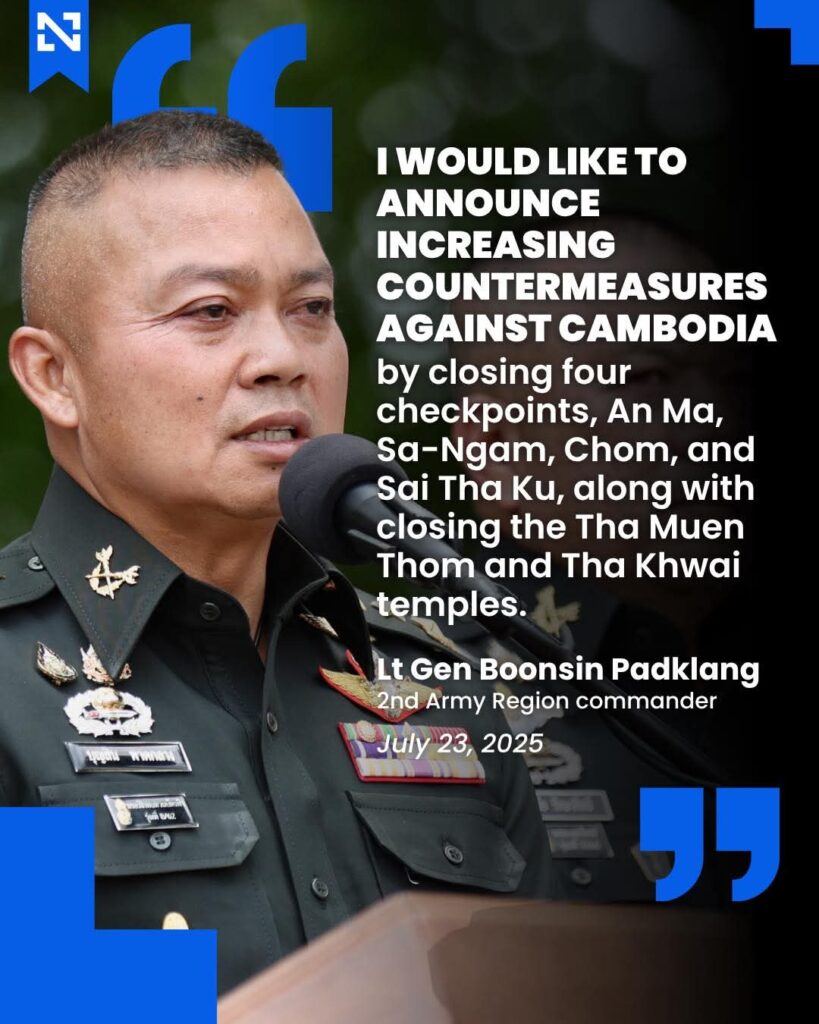
The Thai ambassador was also recalled and the Cambodian ambassador expelled:

On July 24, the first exchange of gunfire followed at Tha Muen Thom temple. According to Cambodian reports, the Thais tried to deny access to the temple (as announced the day before!) and laid barbed wire.
It remains unclear who actually fired first, but it should be obvious that the aggression did not come from Cambodia. According to its own media reports (see above), Thailand wanted to deny access to a central temple in the conflict, although Cambodia considers the temple and the area around it to be its own territory.
The Bangkok Post also reports on the confrontation at the temple in question as the starting point of the hostilities:
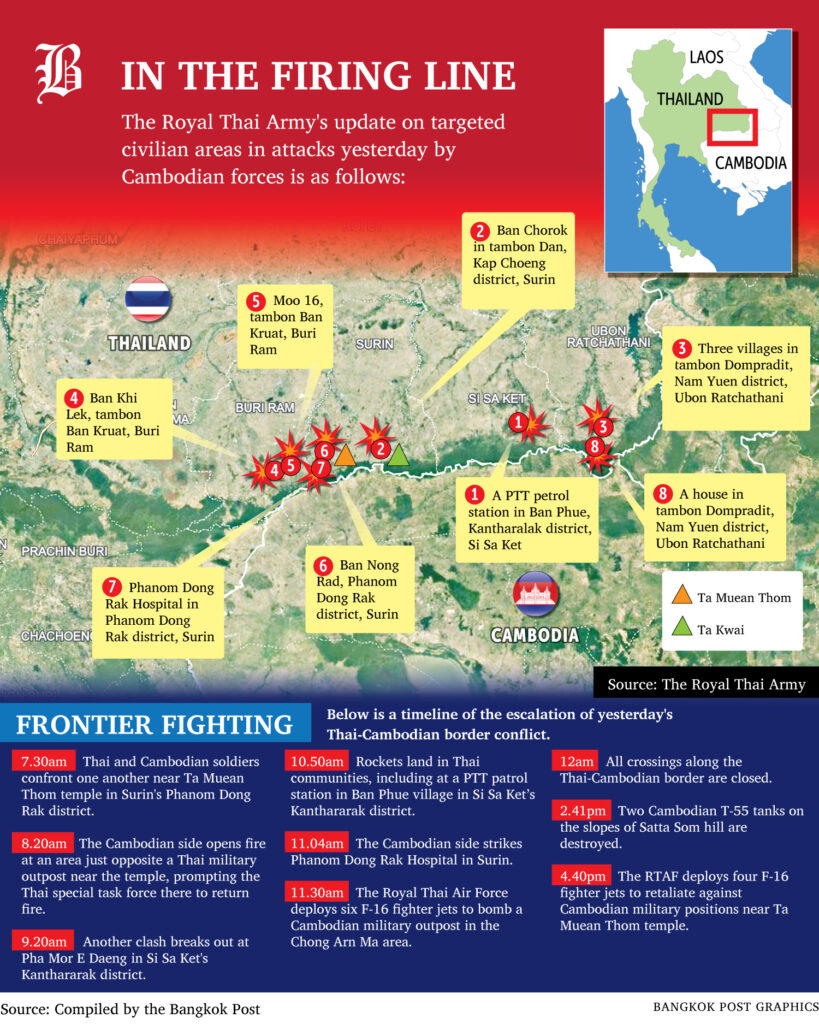
As of July 25, the Thai military – according to its own media – further intensified the conflict with a new offensive.
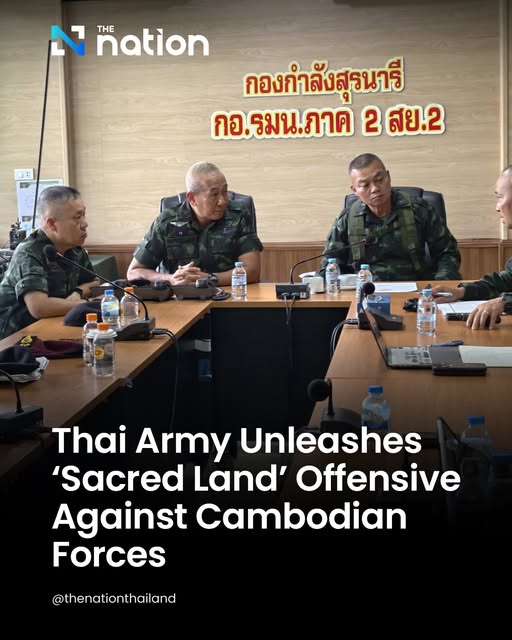
Although Cambodia had already appealed to the UN Security Council and condemned Thailand’s aggression:
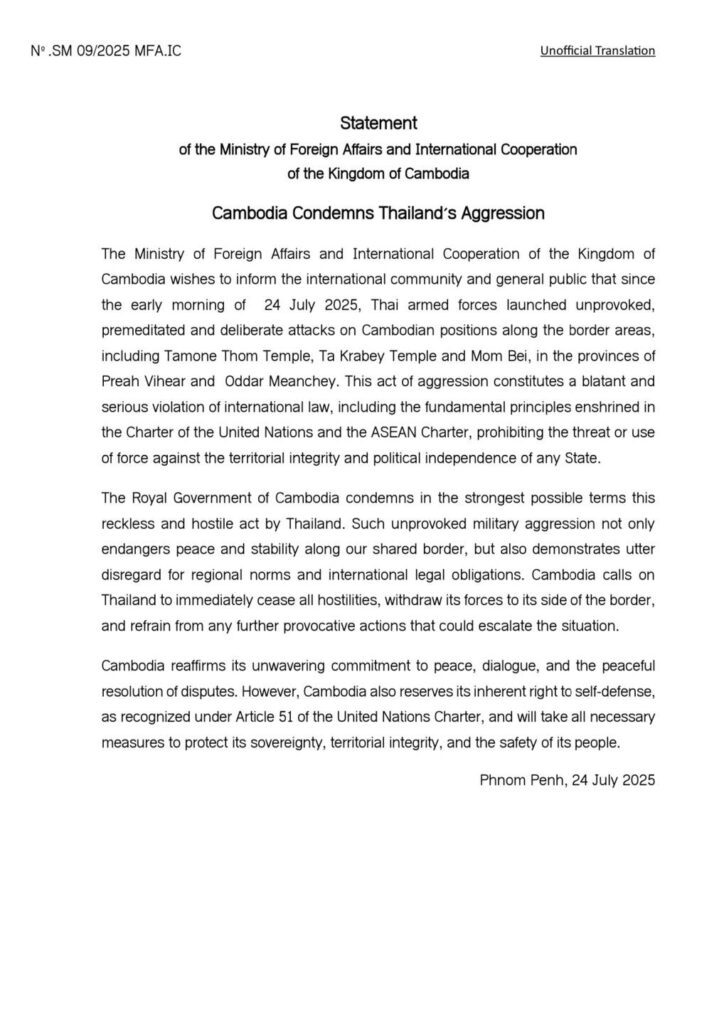

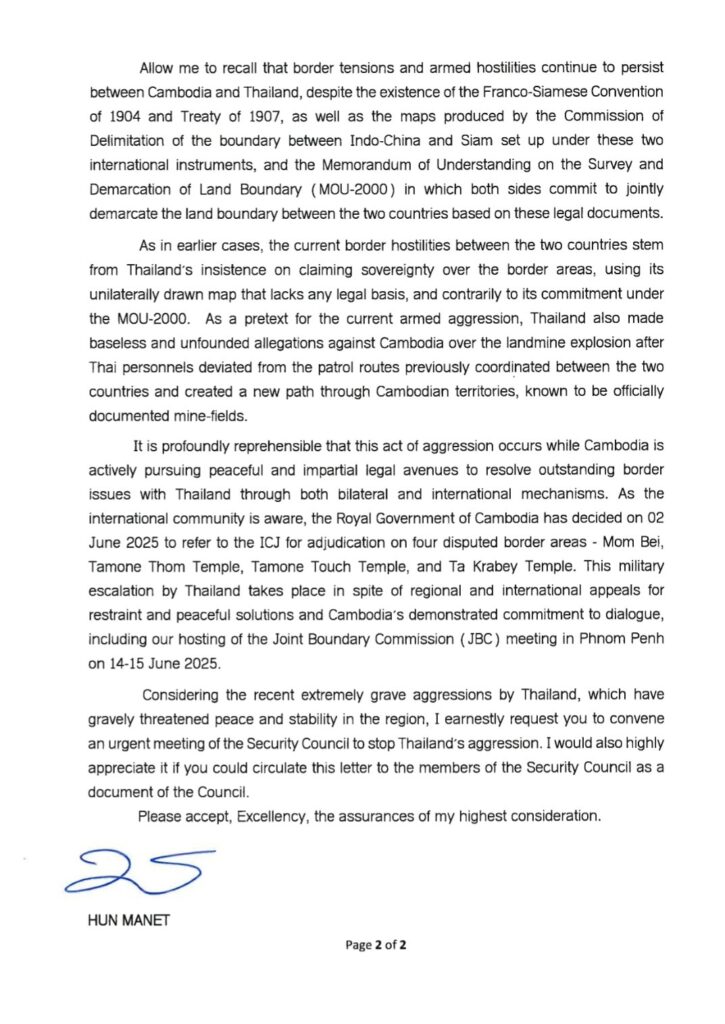
While the media “The Nation” from Thailand reports on this in a way that resembles a computer game:
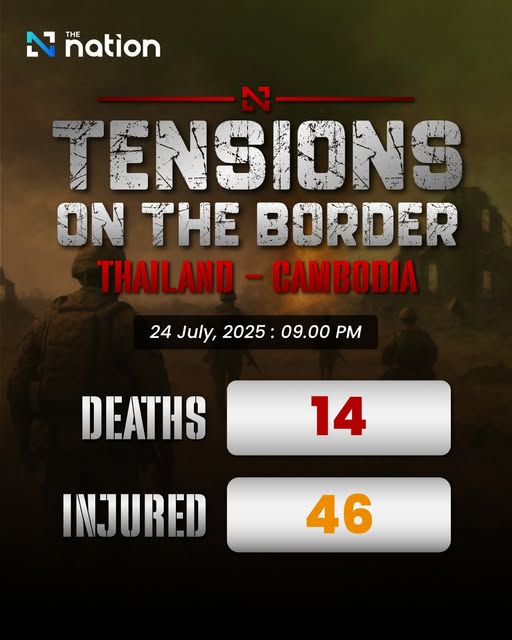
We hope that the conflict will end as soon as possible in the interest of the civilian population.
Thailand confirms deployment of US F-16s against Cambodia – possible breach of international arms export laws
The Thai army has officially confirmed the deployment of F-16 fighter jets against targets in Cambodia. In social networks and media reports, military representatives are openly boasting about the operation – a move that will not only further exacerbate tensions in Southeast Asia, but is also likely to have serious legal and diplomatic consequences for Thailand.
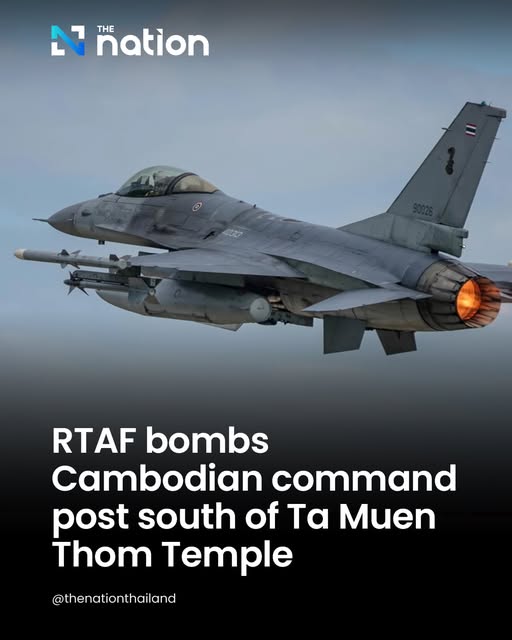
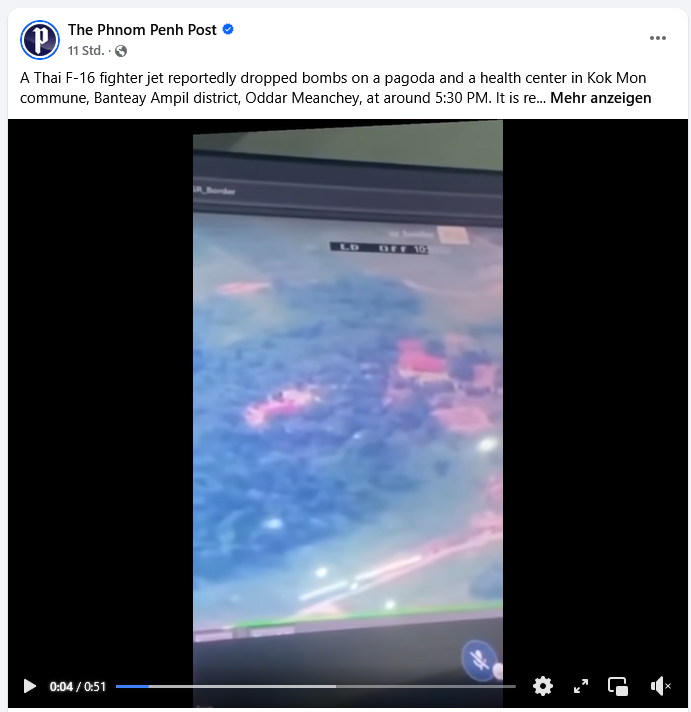
This is because the F-16s used originate from US arms deliveries that are subject to strict end-user agreements (EUA). These clearly stipulate that US weapons may not be used for cross-border combat operations without the approval of the United States.
Clear risk of breach of contract – USA could intervene
US arms exports are regulated by the Arms Export Control Act (AECA) and the International Traffic in Arms Regulations (ITAR). At the center of this is the end-use certificate, which binds every buyer state, particularly with regard to
- Use for defensive purposes only,
- Prohibition of unauthorized attacks against third countries,
- No transfer to third parties,
- as well as cooperation in technical control, for example through maintenance or software restrictions.
The open use of F-16s in an unauthorized war of aggression constitutes a violation of the export agreement under US law. The USA reserves the right to take far-reaching measures in such cases, including
- Immediate halt to all arms deliveries,
- technical deactivation or withdrawal of maintenance of the deployed systems,
- Imposition of sanctions,
- and, if necessary, international diplomatic action if a violation of international law has occurred.
Regional tensions threaten to turn into a full-scale war
Phnom Penh has already condemned the air strike as an “act of aggression” and has referred the matter to the UN Security Council.
If there are civilian casualties in the operation – as initial reports suggest – this would not only mean a political escalation, but would also lead to human rights investigations.
What can the USA do now?
While the USA has not yet commented publicly on the incident, there is growing international pressure to react. The following are conceivable:
- An immediate withdrawal of all maintenance contracts,
- The technical blocking of certain components via software,
- Punitive measures against the Thai Ministry of Defense or individual persons responsible,
- and a reassessment of the entire military partnership with Thailand.